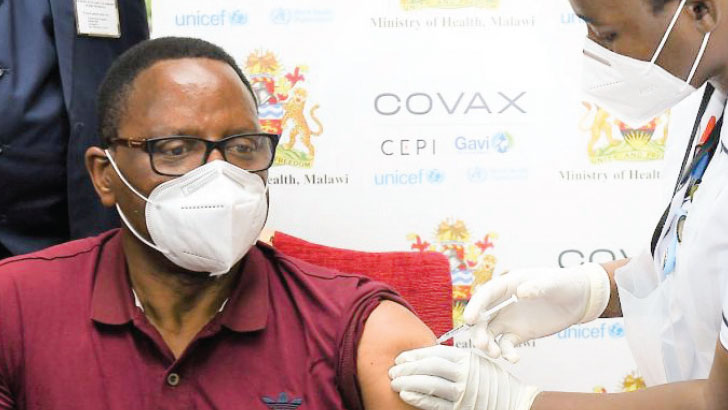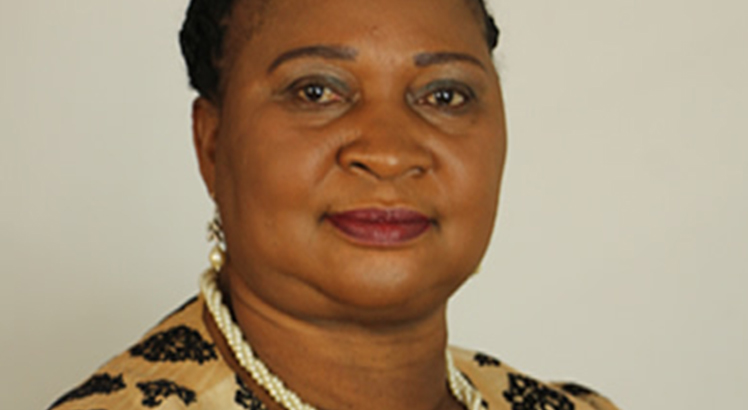Malawi’s Jab miss
Malawi is unlikely to vaccinate 30 percent of its population against Covid-19 by end of this year as per World Health Organisation’s (WHO) recommendations, trends show.
With less than four weeks to the target date, Malawi has so far vaccinated just 3.2 percent of the earmarked 11 million people, nine months after vaccination began.
The targeted population represents 60 percent of the country’s so-called critical population that must be reached to curb the infection rate and get closer to achieving herd immunity by this time next year.

WHO recommended that African countries should achieve the 30 percent target by December this year and another 30 percent by December 2022.
President Lazarus Chakwera and Vice-President Saulos Chilima led the vaccine roll- out on March 11 2021, but uptake has been slow.
Public Health Institute of Malawi (Phim) figures show that as of Monday this week, just over 1.4 million doses have been administered in the country.
Of those, only 600 000 (around 3.2 percent of the 11 million targeted population) are fully vaccinated at a time a new and more virulent variant, Omicron, has hit countries with strong trade and migration links with Malawi such as South Africa and Botswana.
In Malawi, there are now around 62 000 confirmed Covid-19 cases and more than 2 300 deaths so far.
The Ministry of Health cannot hide its exasperation at the low vaccination numbers.
In an interview yesterday, the ministry’s spokesperson Adrian Chikumbe said initially, it targeted to vaccinate an average of 10 000 people per day, which would have helped hit the target.
But he said the ministry is only reaching 6 000 people per day, attributing the low uptake to misinformation and poor support from religious and traditional leaders.
“Traditional and faith leaders have not been helping because we haven’t felt their impact, yet they have been saying community members listen to them more than anyone else,” said Chikumbe.
He said the ministry has exhausted all strategies in sensitising community members on the importance of getting vaccinated.
Chikumbe said while, among others, the ministry has been engaging community leaders and hiring minibuses with public address systems, the end result has been discouraging.
Experts are worried about the low vaccine intakes.
In a separate interview, Malawi University of Science and Technology microbiologist Gama Bandawe said the current situation shows that Malawians have not fully accepted the importance of Covid-19 vaccines; hence, the low turnout.
“We are really setting ourselves up for failure. What government needs to do is first intensify messaging. People need to understand why it is important to have these vaccines,” he said.
Bandawe also expressed fear that people’s reluctance to embrace the vaccination is likely to result in widespread of new variants, which would worsen the situation.
Meanwhile, our efforts to engage Presidential Task Force on Covid-19 co-chairpersons Dr Wilfred Chalamila Nkhoma and Khumbize Chiponda on what they will do woo more people into the vaccination exercise proved futile as they could not be reached on their mobile numbers yesterday.
But in a Covid-19 update for Monday, Chiponda, who is also Minister of Health, urged Malawians to go for the vaccination exercise, especially with the emergence of the Omicron (B.1.1.529) variant.
She said: “Since we launched our public vaccination programme this year, over one million and four hundred doses have been administered in Malawi.
“While this is welcome progress, it is not enough to enable us reduce infections, prevent illness and death and restore our economy. Vaccination against Covid-19 is free.”
Within the region, vaccination performance is mixed.
For instance, Mozambique has vaccinated 11 percent of its earmarked population, Zambia 3.6 percent, Zimbabwe 18.8 percent, Tanzania 1.5 percent and South Africa 24.1 percent.
Globally, the population of fully-vaccinated people stands at nearly 43 percent.





